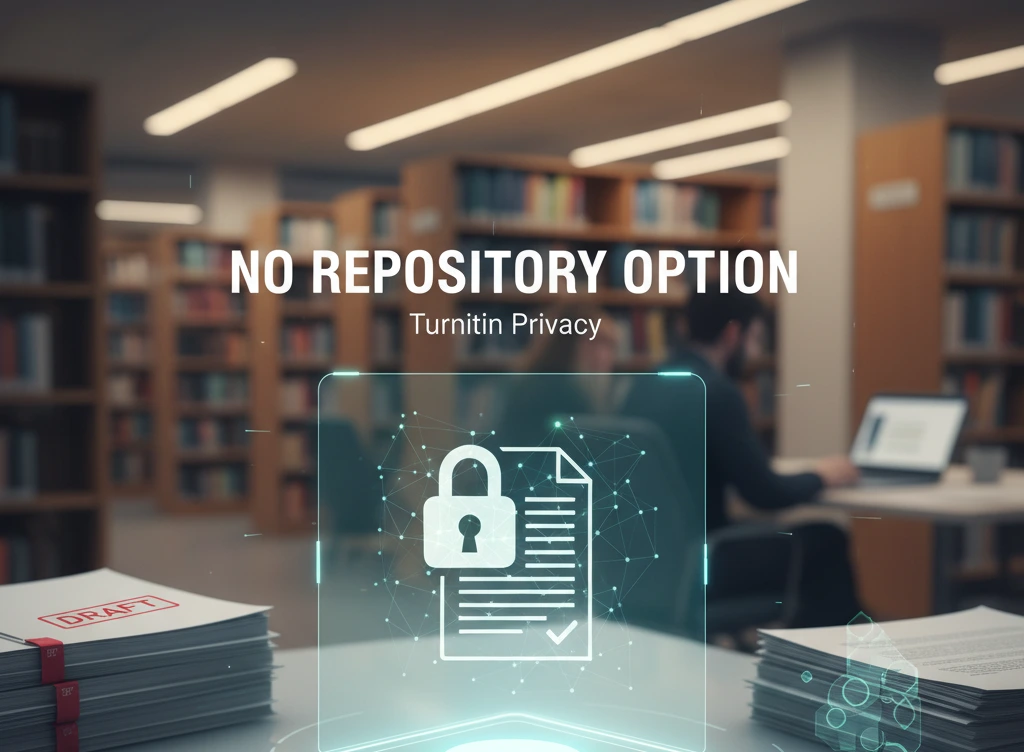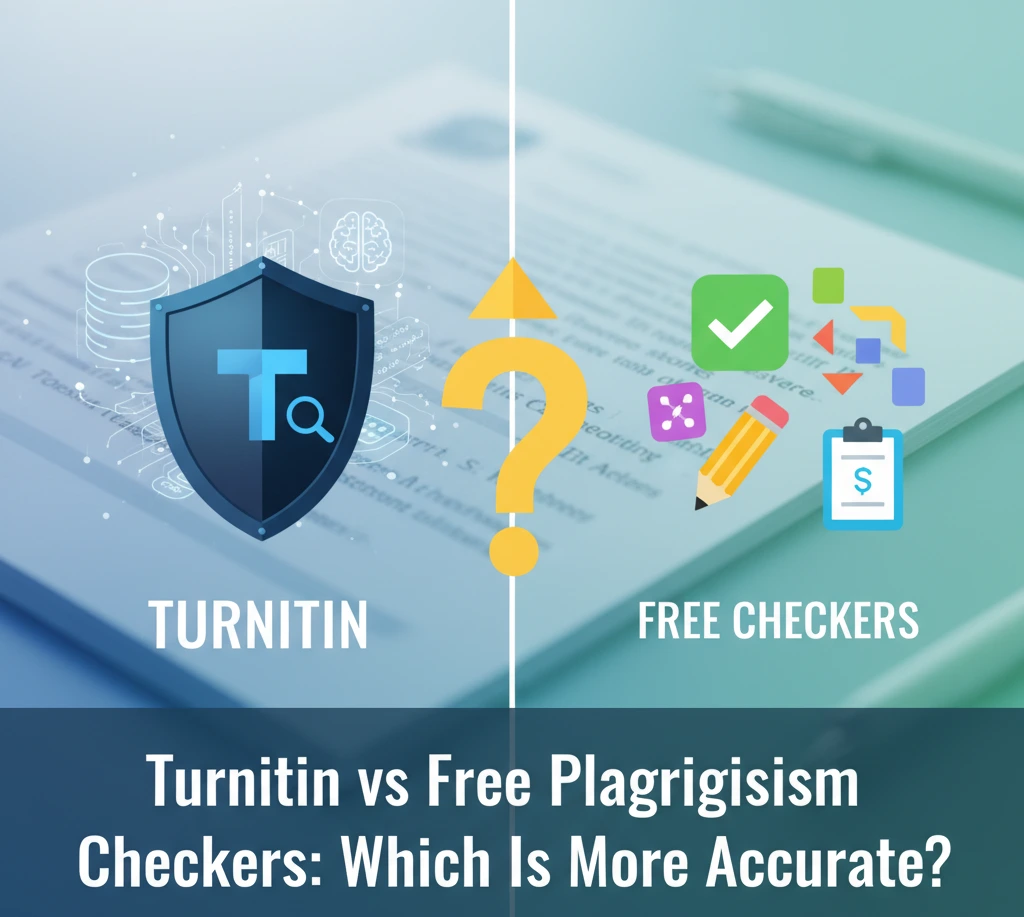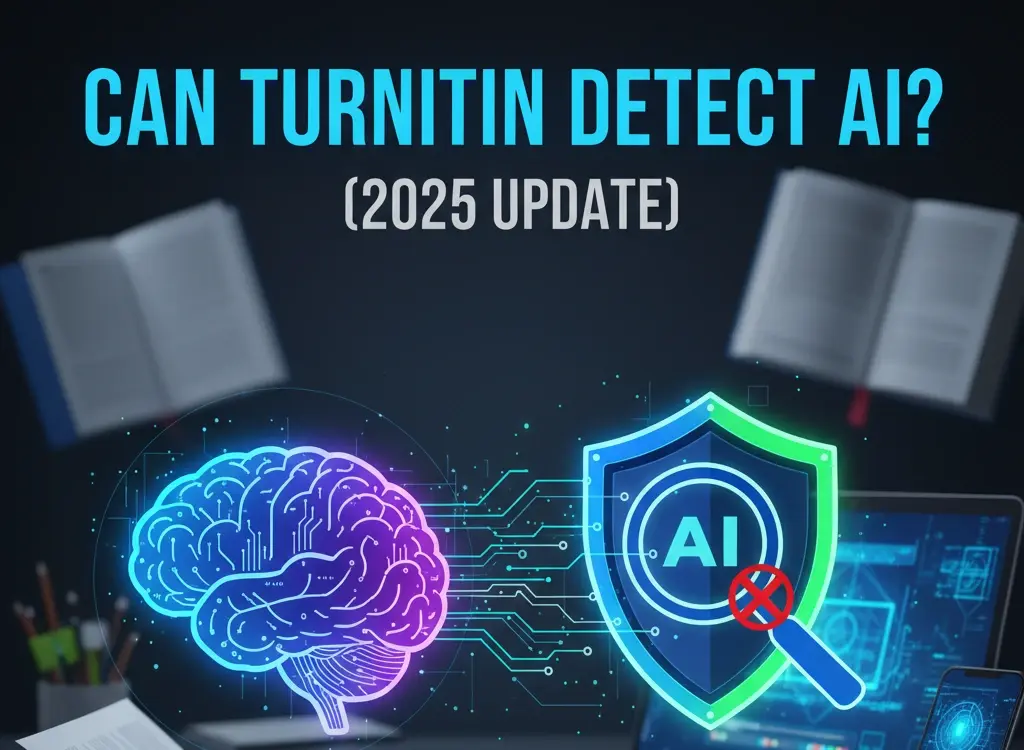Disclaimer: This article provides ethical and academic-integrity-focused advice for reducing similarity. PlagAiReport promotes responsible writing practices. Our service offers official Turnitin and AI detection reports to help you check your paper responsibly before submission.
– PlagAiReport Team
In the rapidly evolving academic landscape of 2025, where advanced plagiarism and AI detection tools are the norm, the concern over generating truly original work has never been higher. For students, researchers, and professional writers alike, the challenge is two-fold: how to effectively incorporate external sources to support an argument, and how to do so without triggering a high similarity score or, worse, committing an act of plagiarism.
This is not a task of blindly swapping synonyms; it is an exercise in deep comprehension and skillful academic writing. The goal is clear: to reduce plagiarism and lower similarity percentages while preserving the original author’s intended message and maintaining your own paper’s coherence and academic integrity.
This comprehensive guide, based on research from leading sources like Turnitin, Grammarly, and Purdue OWL, will explain the practical, real-world plagiarism reduction techniques that actually work ethically, ensuring your rewritten content is both original and accurate. By focusing on understanding your topic through proper online research, you move past simple rewording to true synthesis.
Section 1: What Is Plagiarism and Why It Happens
Plagiarism is fundamentally the act of presenting someone else’s work or ideas as your own, whether intentionally or accidentally, by failing to give proper credit. In an academic context, it is a serious breach of academic integrity.
Understanding the types of plagiarism is the first step toward learning how to avoid plagiarism:
- Direct Plagiarism: Copying text word-for-word without quotation marks or citation.
- Mosaic Plagiarism (Patchwriting): Borrowing phrases, words, and structure from a source and merely changing a few words (often with synonyms) without proper citation. This is one of the most common forms detected by sophisticated tools like Turnitin, as the underlying sentence structure and idea flow remain too close to the original.
- Accidental Plagiarism: Occurs when a writer genuinely intends to cite but forgets an in-text citation, omits quotation marks, or paraphrases a source too closely.
- Self-Plagiarism: Reusing a significant portion of your own previous work (from another course or publication) without permission or proper acknowledgment.
Plagiarism detection software, particularly the Turnitin similarity report, functions by comparing your submitted text against a massive database of web pages, published articles, and previously submitted student papers. It highlights matching text and calculates a percentage. Even a small structural or phrasing similarity can be flagged, emphasizing why simply using a thesaurus is an ineffective defense.
Section 2: Why Synonym Tools Alone Don’t Work
The most common, yet ineffective, strategy writers use to reduce plagiarism is substituting a few words in a sentence with synonyms by using paraphrasing tools such as Quillbot. This is a form of mosaic plagiarism.
Why is this approach flawed in the era of advanced plagiarism reduction techniques?
- Similarity Detection: Tools like Turnitin are not fooled by simple word swaps. They analyze the deeper structural elements of the sentence—the phraseology, the sequence of ideas, and the grammatical patterns. If the core idea and sentence structure remain the same, a high similarity score will still result.
- Loss of Coherence and Tone: Synonym-swapping often results in grammatically awkward or nonsensical sentences. Technical terms or subject-specific phrases cannot be arbitrarily replaced without distorting the meaning. Your writing becomes clunky, incoherent, and unoriginal, defeating the purpose of quality academic writing.
- Intellectual Theft: Plagiarism is about stealing ideas, not just words. Even if you change every word, if the idea is still presented as the original source’s structure and flow without attribution, it is unethical and constitutes plagiarism (Grammarly).
To successfully rewrite without changing meaning, you must engage with the source material, understand the core concept, and then articulate that concept entirely in your own voice and unique sentence structure.
Section 3: Smart Techniques to Reduce Plagiarism Without Losing Meaning
The secret to ethical paraphrasing tips lies in demonstrating genuine understanding. Effective rewriting involves a process of comprehension, restructuring, and proper attribution.
1. Master the Art of Restructuring (The 4R’s Method)
Instead of looking at the original text and changing words, follow a systematic process:
- Read: Read the original passage several times until you fully understand the core idea.
- Restate (Without Looking): Close the source and write the idea down from memory. Imagine explaining the concept to a friend. This forces you to use your natural vocabulary and syntax.
- Recheck: Compare your version with the original source to ensure you accurately captured all essential information and did not accidentally use any similar phrases.
- Repair: If the wording or structure is too close, revise again, focusing on structural changes (e.g., combining sentences or breaking them up).
2. Implement Structural and Grammatical Shifts
Focus on transforming the sentence’s framework, not just its vocabulary.
| Technique | Original Example | Paraphrased Example |
| Change Voice (Active to Passive or vice-versa) | The researcher conducted a survey on 300 participants. | A survey was conducted on 300 participants by the researcher. |
| Change Parts of Speech | The discovery of DNA was a significant contribution. (Noun) | Discovering DNA contributed significantly to science. (Verb) |
| Combine or Break Sentences | The test was flawed. The results were thus invalid. | Due to the inherent flaws in the test design, the resulting data were rendered invalid. |
| Convert Phrases/Clauses | According to the study, obesity rates are rising rapidly. | Rising obesity rates are a key finding of the recent study. |
3. Summarize and Synthesize Multiple Sources
For long paragraphs or sections, true plagiarism reduction techniques involve summarizing and synthesizing.
- Summarizing: Condense a lengthy passage to its main points in your own words. A summary is much shorter than the original, focusing only on the most crucial takeaway.
- Synthesizing: This is the highest level of academic writing. It involves combining information and ideas from two or more sources and weaving them into your own fresh explanation. When you synthesize, your unique contribution is the connection, comparison, or critique you build between the sources. This inevitably produces truly original text.
4. Cite Everything Properly (The Gold Standard)
Regardless of how well you paraphrase or summarize, the idea is not yours; it must be cited.
- In-text Citation: Immediately follow all paraphrased material, summaries, or direct quotes with an in-text citation (e.g., APA, MLA, Chicago). This formally credits the source and demonstrates academic integrity.
- Reference List: Every in-text citation must have a corresponding full reference entry in your reference list or bibliography.
- Direct Quotes: Use them sparingly, only when the original wording is essential (e.g., a technical definition or a distinctive, powerful statement). ALWAYS enclose direct quotes in quotation marks and include the page or paragraph number.
For a detailed breakdown of what Turnitin flags, you should read our guide on “How to Read and Understand a Turnitin Similarity Report.“
Section 4: Using AI and Grammar Tools Wisely
Generative AI and advanced grammar tools have their place in the ethical writing process, but they are not a substitute for human thought.
- AI Rewriters (e.g., QuillBot, Grammarly’s Paraphrasing Tool): These tools can be helpful for quickly generating alternative phrasing to break writer’s block or to see structural options. However, they are often prone to over-reliance and may produce “AI-paraphrasing detection” flags in systems like Turnitin. You must manually edit their output to ensure accuracy, originality, and proper tone. The output is a starting point, not a final draft.
- Grammar and Style Checkers (e.g., Grammarly): Tools that check for clarity, conciseness, and grammatical errors are highly valuable. They help ensure your restructured sentences are grammatically correct and coherent, which is essential for preserving the original meaning.
Crucial Rule: The final review, synthesis, and ultimate ownership of the text must remain with the human writer. Using AI to generate an entire draft and simply editing it is often considered a violation of academic integrity in many institutions.
For more on AI detection, see our articles: “Can Turnitin Detect AI-Generated Content? (2025 Update)“ and “How AI Detectors Identify ChatGPT-Written Text (2025 Update).“
Section 5: Checking Your Paper Before Submission
The final, responsible step for reducing plagiarism is utilizing a high-quality checker. The primary goal of using a checker should not be to “game the system,” but to identify and correct any unintentional plagiarism before submission.
- Run a Plagiarism/Similarity Check: Use a reputable tool (like Turnitin, offered by PlagAiReport) to generate an official similarity report. PlagAiReport offers both Turnitin similarity and AI Detection Reports for this purpose.
- Analyze the Similarity Report: Review the report carefully. Don’t just look at the final percentage; examine the highlighted sections.
- Focus on Source Matching: Which source is your text matching? A match against a generic website is different from a close match against a key scholarly article.
- Fix Highlighted Sections: For any flagged similarity, go back to the original source. If the highlight is a phrase, re-read the original text, close it, and rewrite the idea from your mind, incorporating proper citation. If the highlight is a quote that should be paraphrased, follow the 4R’s method.
- Check for AI-Generated Content: Given the rise of AI tools, a responsible final check must also include an AI detection report. Even if you wrote the paper yourself, an overly generic or repetitive style can sometimes trigger AI detection, which is why manual, human-quality editing is key.
Section 6: Common Mistakes That Still Cause Plagiarism
Writers who genuinely try to avoid plagiarism often make minor yet critical errors that result in high similarity scores:
- Forgetting to Cite: The most frequent mistake. Every idea that is not common knowledge or your own original argument requires an in-text citation.
- Close Paraphrasing (Patchwriting): As discussed, this is when you keep the structure and main phrases of the original, only swapping out minor words. This is not effective paraphrasing and will result in a high Turnitin similarity report score.
- Over-Quoting: A paper dominated by direct quotes signals a lack of synthesis or analysis. Your work should showcase your interpretation and connections, with quotes used only to support specific claims. Too many quotes, even if cited correctly, can indicate poor academic writing skills.
- Changing Meaning: While trying to rewrite a text, a writer might use an incorrect synonym or restructure a sentence in a way that fundamentally alters the author’s original message, leading to misrepresentation, which is a serious ethical concern.
Conclusion
How to lower similarity and reduce plagiarism is ultimately a matter of skill, responsibility, and deep engagement with your material. It is not about a quick fix or a trick to fool detection software.
To write ethically and originally in 2025, you must:
- Understand Before You Write: Conduct thorough research until you truly grasp the source material, allowing you to articulate the ideas from scratch.
- Focus on Structure: Master the art of rephrasing by shifting sentence structure, voice, and phraseology, not just individual words.
- Cite Your Sources: Attribute every idea, quote, and piece of data that is not your own or common knowledge, using a consistent, correct citation style.
- Verify Your Work: Utilize comprehensive tools like PlagAiReport’s Turnitin and AI detection services to identify and correct any residual similarity issues before they become an academic problem.
Plagiarism reduction is not a painful chore, but an essential aspect of sophisticated academic writing. By approaching it as an exercise in comprehension and ethical presentation, you not only safeguard your academic integrity but also produce a stronger, more original, and more impactful paper.
Frequently Asked Questions (FAQs)
How can I reduce plagiarism without changing the meaning?
The most effective method is deep paraphrasing combined with proper citation. Deep paraphrasing requires you to read and understand the source, then rewrite the idea entirely from memory using a significantly different sentence structure, grammar, and vocabulary. You must not merely swap synonyms, but fundamentally change the expression while ensuring the core message and technical accuracy remain intact.
Why does Turnitin still show high similarity even after paraphrasing?
This typically happens due to patchwriting (mosaic plagiarism). Turnitin’s algorithms check for structural and sequential matches of ideas and phrases, not just exact word matches. If your paraphrased text maintains the original source’s sentence order, flow of arguments, and specific technical phrases without substantial structural change, the system will flag it as highly similar, even if you’ve changed a few connecting words. You need to focus on combining or splitting sentences and switching the sentence’s grammatical focus (e.g., passive to active voice).
What are the best methods to rewrite a paper?
The best methods for rewriting to reduce plagiarism are:
- Synthesizing: Combining information from two or more sources into a single, cohesive paragraph, which forces a new structure.
- Summarizing: Condensing a large block of text into its essential points, using your own words, and giving credit.
- Structural Shifts: Changing the grammatical structure of sentences (e.g., noun to verb forms, active to passive voice) instead of just word substitutions.
- Using the 4R’s Method: Read, Restate from memory, Recheck against the original, and Repair for originality and citation.
Can AI tools really help in reducing plagiarism?
AI paraphrasing tools can be helpful aids for suggesting alternative phrasing or breaking writer’s block, but they are not a guarantee against plagiarism. Over-reliance on them can lead to generic, machine-like writing that may still be flagged by advanced AI detectors or deemed unoriginal by your instructor. AI tools should be used responsibly as a drafting assistant, with all output manually verified, heavily edited, and properly cited.
How much plagiarism is acceptable in academic writing?
Ideally, the amount of unoriginal, un-cited, or poorly paraphrased content should be 0%. However, in practice, a Turnitin similarity report includes properly cited direct quotes, bibliographic entries, and common knowledge phrases, which can contribute to the final percentage. Many institutions consider anything above 15–20% (excluding quotes and bibliography) as a trigger for closer examination. Always check your institution’s specific policy. Your focus should be on achieving a low score by ensuring all matching text is either a correctly formatted direct quote or a genuinely original paraphrase, with every idea properly attributed.






